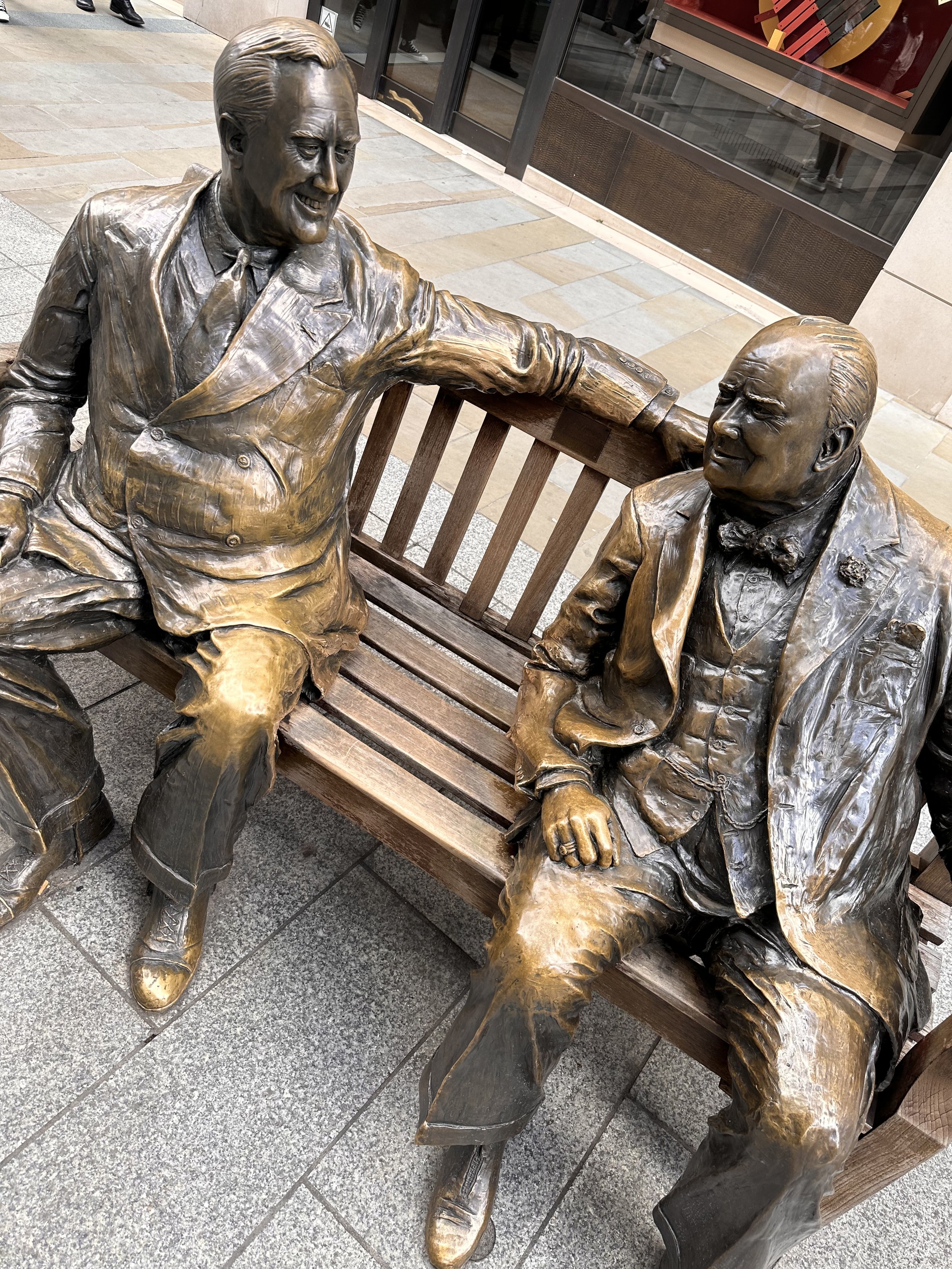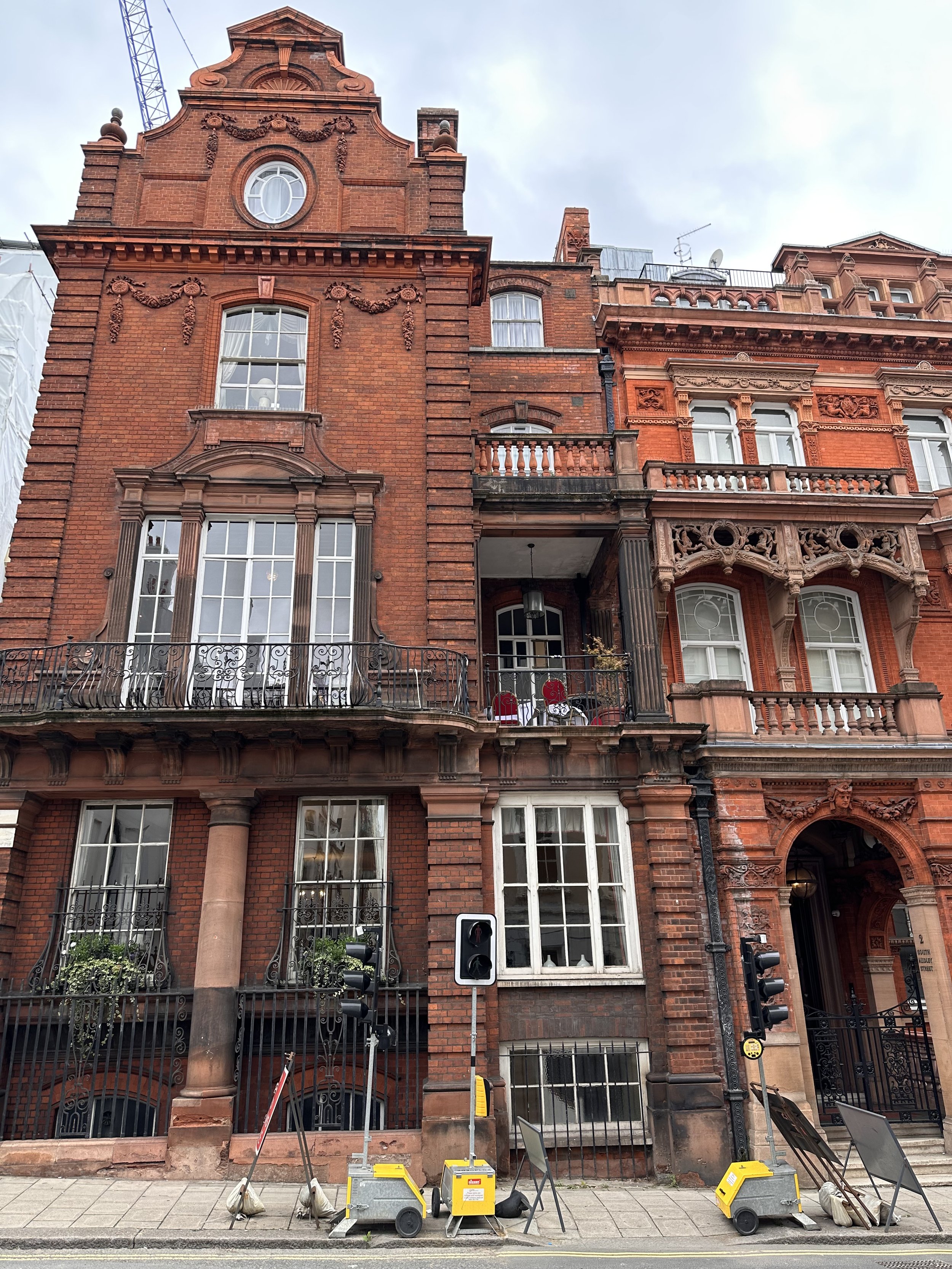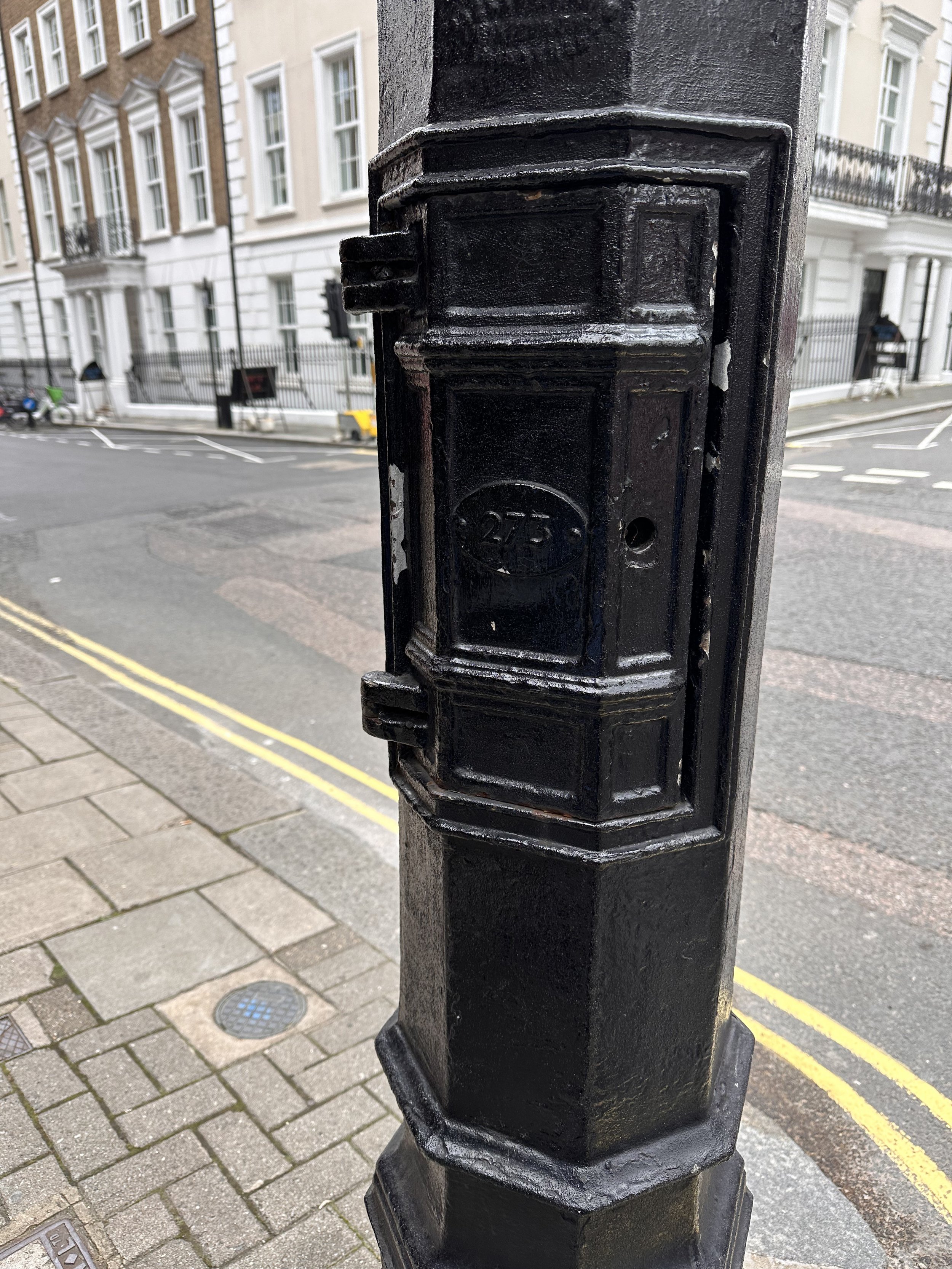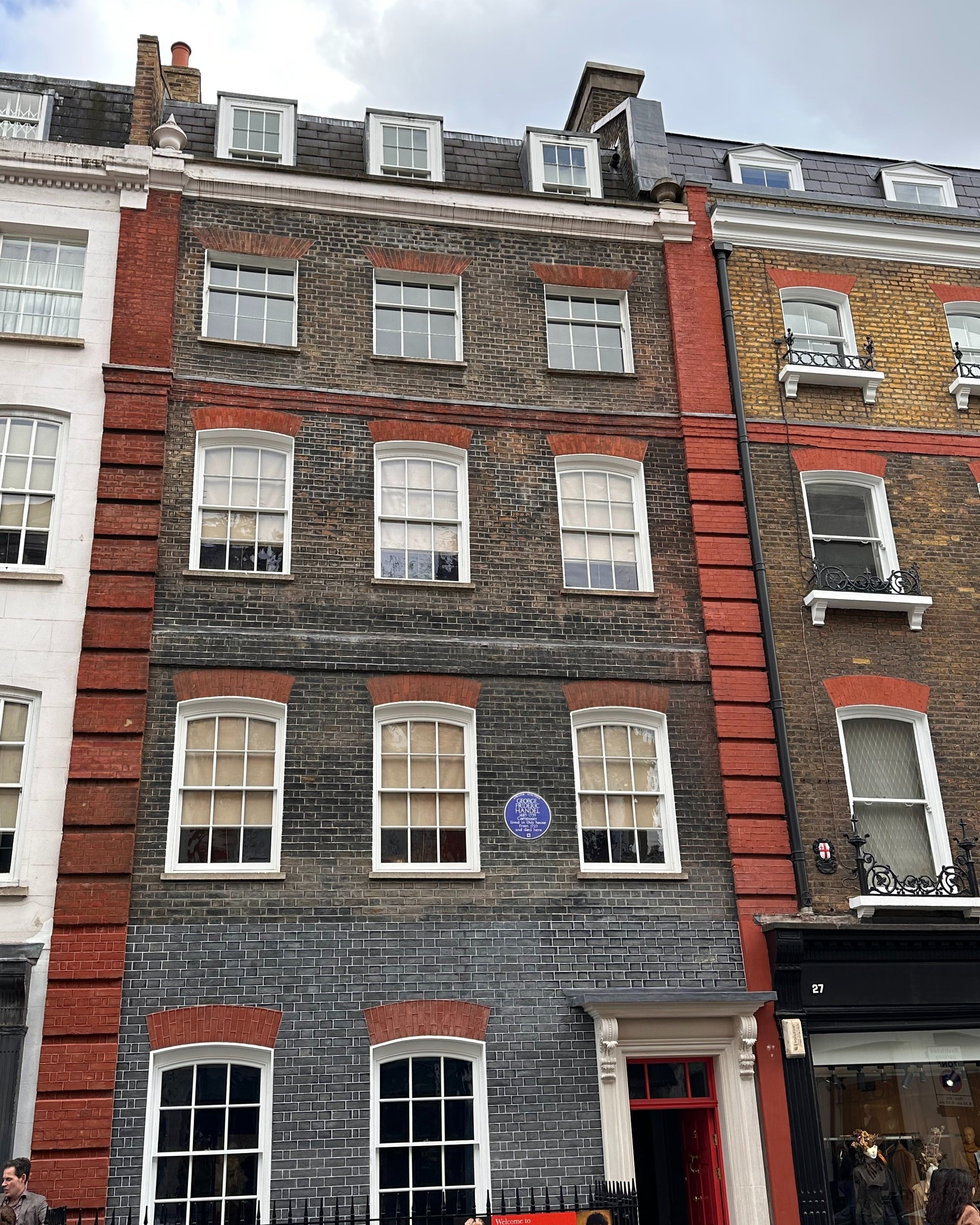Exploring Mayfair, London, England
Note: This post has been updated on September 30, 2023.
There are no shortage of things to do and see in London. Every time we come back, we find new areas to explore and new things to learn. Because of this, we have broken out our London post into several.
The below information is a complete guide of the best places to stay, the top rated places to dine and drink, and all there is to see and do in Mayfair. For transportation tips, as well as a summary of the history of this amazing city, please refer back to the London post.
Jump To:
Where to Stay
While there are many areas to stay in, we have chosen the most popular to consider:
Hotel 41 (Perfect rating)
Where to Dine & Drink
Apricity
A one Green Michelin-starred restaurant with a menu that showcases seasonal British ingredients from small producers with whom she’s built strong relationships.
BiBi
Polished choice with tables & counter seats offering a creative menu of South Asian small plates.
Corrigan’s Bar and Restaurant
Modern gourmet cuisine in a high-end destination highlighting thoughtfully sourced ingredients.
CUT at 45 Park Lane
Some of the best steaks in London – including British, imported USDA prime beef and Japanese Wagyu – are on offer alongside a premium wine list.
Galvin at Windows
Modern French haute cuisine and hand-picked wines with 28th-floor views over Hyde Park.
Hélène Darroze at The Connaught
A 3 Michelin star restaurant known for its famous chef's haute cuisine, in an elegant hotel dining room with wood panels and colourful fabrics.
Hide
While they are open for all meals, they are known for their Michelin-starred breakfast.
Kitty Fisher’s
Modern British fare with a Spanish twist served in a polished, dimly lit space with a bar.
La Gavroche
Michel Roux Jr.'s famous fine-dining restaurant offering luxe French food and impeccable service
Lusin
The menu mixes Armenian specialities, such as dolma and manti, with some Levantine dishes, and the kitchen takes great care in what they produce.
Mercato Mayfair
Hip market in an old stained-glass sanctuary, with food stands, eateries & a vaulted wine cellar.
Murano
A Michelin-starred restaurant serving fine Modern European cuisine in a light, sophisticated space with chef's table.
Ormer Mayfair
Carefully sourced British ingredients take centre stage in this wood-panelled hotel dining room.
Pollen Street Social
A Michelin-starred restaurant serving a sophisticated Modern British menu in Jason Atherton's buzzy contemporary dining room and lounge bar.
Roji
Compact sushi bar offering creative tasting courses & sake pairings in simple surrounds.
Scott’s
Huge selection of market-fresh fish, seafood and caviar plus an elegant oyster and champagne bar.
Sketch
A 3 Michelin star restaurant, known for its quirky, 18th-century townhouse tea room that transforms into a cocktail lounge every evening. They also have several other dining and lounge areas, each with different menus.
We booked The Gallery and while it doesn’t have stars, it has all the makings of earning them. The food was fun, playful, and delicious (see the video above for more on our experience). How we found room for dessert, I have no idea.
Want a night cap? There are three bars you can walk into, hidden behind doors and down hallways. Need the restroom? Check out the restroom pods. It’s definitely a one-of-a-kind experience.
The Grill
Upscale grill fare with British produce in an elegant dining room decked in leather and marble.
The Luggage Room
Speakeasy
Things to See & Do
When Churchill died on January 24, 1965, Britain mourned, just as the United States had done 20 years before when President Roosevelt died suddenly while still in office. In many ways, the two were very different men: Churchill was a staunch and belligerent conservative and former soldier; Roosevelt, a polio survivor, presided over the New Deal, one of the most far-reaching liberal reforms in the history of the U.S. But pushed together by fate, Churchill and Roosevelt forged one of the most important relationships of the 20th century.
After the war ended in 1945, many grandiose statues were made to celebrate the two heroes, but it was intimacy that British-American sculptor Lawrence Holofcener had in mind when he created Allies. The two friends sit on a bench, talking amiably, with Churchill holding his trademark cigar. Princess Margaret unveiled the statue on May 2, 1995, to commemorate 50 years of peace.
Where to find: The bench is on New Bond Street between Grafton Street and Clifford Street.
Audley Square Spy Lamp Post
During the Cold War, the Soviet Union’s KGB had numerous agents at work in London. While some could operate under diplomatic cover, many others did not. These “illegal” agents, after gathering their information, needed some way to pass it discreetly onto their KGB superiors. Their reports would be left at selected drop sites, also known as “dead letter boxes”. One such dead letter box was an inconspicuous lamp post in Audley Square, just outside the University Women’s Club, at No. 2. Starting in the 1950s, agents would leave their documents behind the small door to the rear of the post. To indicate there was a message waiting, a chalk mark was made near the base.
The existence of this dead letter box was only revealed to British Intelligence after the 1985 extraction of their secret agent, Colonel Oleg Gordievsky, from under the watchful eyes of the KGB in Moscow. In a strange coincidence, back in the early ’60s, No. 3 Audley Square was used as an office by Cubby Broccoli and Harry Saltzman when they were casting the role of a certain James Bond—all the while unaware of the real-life spies who may have been lurking just outside.
How to find: No. 2 Audley Square is clearly signposted. (The lamp post is numbered as well.) The Embassy of Qatar is next door at No. 1. Audley Square, which sits at the bottom of South Audley Street, which runs more-or-less parallel to Park Lane. The nearest Underground stations are Hyde Park Corner and Green Park.
Bond Street
Bond Street, in the West End of London, links Piccadilly in the south to Oxford Street in the north.
The street was built on fields, surrounding Clarendon House, on Piccadilly, which was developed by Sir Thomas Bond. It was built up in the 1720s, and by the end of the 18th century, was a popular place for the upper-class residents of Mayfair to socialize. Prestigious or expensive shops were established along the street, but it declined as a center of social activity in the 19th century, although it held its reputation as a fashionable place for retail, and is home to the auction houses Sotheby's and Bonhams (formerly Phillips), the department store, Fenwick, and jeweler, Tiffany & Co.. It is one of the most expensive and sought-after strips of real estate in Europe.
Handel & Hendrix in London
Handel & Hendrix in London (previously Handel House Museum) is a museum dedicated to the lives and works of the German-born British baroque composer, George Frideric Handel, and the American rock singer-guitarist, Jimi Hendrix, who lived at 25 and 23 Brook Street, respectively (one wall and 200. years apart).
Handel made his home in London in 1712 and eventually became a British citizen in 1727. Handel was the first occupant of 25 Brook Street, which he rented from 1723 until his death in 1759. Almost all of his works, after 1723, were composed and partially rehearsed in the house, which contained a variety of keyboard instruments, including harpsichords, a clavichord, and a small chamber organ.
Brought to London by manager Chas Chandler in September 1966, Jimi Hendrix quickly established a reputation as a spectacular live performer, based on an intensive period of playing in London clubs, as well as venues across the UK, often delivering more than one set per night. For the next three months, Hendrix used the flat as his base, giving interviews there, writing new songs, and preparing for his February concerts at the Royal Albert Hall. On learning that Handel used to live next door, he went to the One Stop Record Shop in South Molton Street and bought some classical albums – including Handel’s Messiah and Water Music.
The museum was opened in 2001 and comprises a carefully restored set of period rooms on the first and second floors of 25 Brook Street, together with exhibition rooms in number 23, the adjacent house on the terrace. In 2016, the museum expanded to incorporate the upper floors of 23 Brook Street, home of Jimi Hendrix in the late 1960s
Savile Row
The first house, in what would become “Savile Row”, was "a fine House and Ground", built in 1674, on the site of what is now No. 1, and occupied by a series of nobles until it was demolished in 1730, in preparation for the laying out of the houses on the east of Savile Row in 1731.
Savile Row was built between 1731 and 1735, on freehold land known as “Ten Acres “, belonging to a merchant tailor, William Maddox, as part of the development of the Burlington Estate, and is named after Lady Dorothy Savile, wife of the 3rd Earl of Burlington.
Initially, the street was occupied by military officers and their wives, along with politicians. Some of the notables included, William Pitt the Younger, Irish-born playwright and MP, Richard Brinsley Sheridan; Jules Verne had Phileas Fogg, his lead character in Around the World in Eighty Days, live at 7 Savile Row (a fashionable address and the former home of Sheridan). It may have been the affluent and influential nature of the residents of Savile Row that first attracted dealers in luxury goods to the area.
Tailors started to take premises around Savile Row in the late 18th century, first in Cork Street, about 1790, then by 1803 in Savile Row, itself. In 1846, Henry Poole, credited as creator of the dinner jacket or tuxedo, opened an entrance at 37 Savile Row from his late father's tailoring premises at 4 Old Burlington Street. As tailoring moved into the street, the house frontages were altered to bring natural light into the tailors' working area with the addition of glass frontages and light wells. The houses have been much altered over time; the original Burlingtonian design has been mostly lost, though No. 14 still retains much of the original external feature.
In July 1968, the Beatles moved Apple Corps, their multimedia corporation, into 3 Savile Row. A studio was built in the basement, though it was poorly designed. The Beatles recorded “Let It Be” there before a new studio was constructed in 1971. The Beatles' final live performance, known as the "rooftop concert", was held on the roof of the building, on January 30, 1969, and was recorded for the documentary film “Let It Be”. The last words of the band, spoken by John Lennon as the police stopped the performance, were "I hope we passed the audition."
The Savile Row Bespoke Association was founded in 2004 to protect and develop bespoke tailoring as practiced in Savile Row and the surrounding streets. The member tailors are typically required to put at least 50 hours of hand labor into each two-piece suit. The Association, along with the owners, the Pollen Estate, are working in partnership with Westminster Council to protect the street's tailoring heritage under the Savile Row SPA (Special Policy Area). This was a fantastic move as with increasing rents and criticisms from Giorgio Armani of falling behind the times, the number of tailors in Savile Row had declined to 19 in 2006, from approximately 40 in the 1950s. However, tailoring businesses have increased since 2006, and as of October 2014, a local online directory listed 44 tailoring and clothing businesses on and around Savile Row.
Founded in 1849 by Mr. Henry Huntsman, H. Huntsman & Sons incorporated as a Victorian breeches-maker, dating back to 1809, when the house was first established at No. 126 New Bond Street. Henry Huntsman, thereby, founded a tailoring house, which quickly gained a reputation for dressing the hunting and riding aristocracy of Europe for much of the 19th century (Huntsman continues to make equestrian and sporting tailoring today and Henry Huntsman's very own breeches are still displayed in the company's Savile Row shop). Early 20th century advertisements for Huntsman breeches survive in the company's archives, as do photographs depicting many golden-era Hollywood celebrities, such as Clark Gable and David Niven; as well as images of His Royal Highness ,Edward VII, in full equestrian dress atop a horse. In fact, the house's relationship with British royalty extends as far back as Queen Victoria and Prince Albert, who both patronized the house from its opening in 1849.
During WWI, Huntsman was a tailor to the military, producing dress uniforms for British officers throughout the conflict. Several ledger books remain in Huntsman's archives today, listing the names of each officer and their commissions, often with a note revealing their fate in the margins.
The firm moved to No. 11 Savile Row with the ending of the war in 1919, with the onset of the Roaring 20s. The Prince of Wales (soon to become Edward VIII) was a customer during the 1920s, which prompted much of the jet-set of the time to follow. Cecil Beaton, Laurence Olivier, Bill Blass, and Lord Louis Mountbatten were all notable clients. It was during this time that Huntsman came to acquire the two stags' heads which overlook the shop-front today. They fell into the company's hands by chance; being left by a customer who went out to lunch in 1921 and neglected to ever return.
In 1932, Henry Huntsman's sons passed on the firm to Mr. Robert Packer, who drove the company forward into the 21st century, transforming "Huntsman's reputation from that of merely a reliable gaiter and britches maker, to a glamorous bespoke fashion house". From the 1930s to the 1970s, working with Head Cutter Colin Hammick, Packer ensured that Huntsman's reputation, as the most expensive Savile Row tailor, was well established. Hammick believed he offered 'the best quality' on Savile Row to justify the house's high prices, retaining a high-profile international clientele.
In 2013, financier Pierre Lagrange purchased Huntsman, and the house has since undergone a number of modernizations. Likewise, in 2013, Huntsman acted as the inspiration behind “Kingsman: The Secret Service”. Director Matthew Vaughn first decided to set his film within a tailor's shop when visiting Huntsman for a fitting. Vaughn has been a Huntsman customer since his mother brought him to the store to order his first bespoke suit at 18 years of age.
The Burlington Arcade Beadles
Burlington Arcade is a covered shopping arcade in 196 yards long, parallel to and east of Bond Street, from Piccadilly, through to Burlington Gardens. It is one of the precursors of the mid-19th-century European shopping gallery and the modern shopping mall.
The arcade was built in 1818 to the order of George Cavendish, 1st Earl of Burlington, younger brother of William Cavendish, 5th Duke of Devonshire, who had inherited the adjacent Burlington House. The arcade was built to prevent passers-by from throwing oyster shells and other rubbish over the wall of his home.
Burlington Arcade was built "for the sale of jewelry and fancy articles of fashionable demand, for the gratification of the public". However, it was also said to have been built so that the Lord's wife could shop safely amongst other genteel ladies and gentleman away from the busy, dirty, and crime-ridden open streets of London.
Burlington Arcade opened on March 20, 1819, and consisted of a single straight top-lit walkway lined with 72 small two-story units. Some of the units have been combined, reducing the number of shops to around 40. The Piccadilly façade, with sculptures carved by Benjamin Clemens, a professor of sculpture at the Royal College of Art, was added in 1911.
The arcade is patrolled by beadles, in traditional uniforms, that include top hats and frock coats. The original beadles were all former members of Lord George Cavendish's regiment, the 10th Royal Hussars.
NOTE: We walked through there and it is true that the beadles are still there, but they really don’t govern anything. Also, there are a couple of high end shops but really, it is just a nice pass through to see what shopping in the Victorian era was really like.
Tiny Mouse House
Right outside if Hedonsim Wines’s building is a tiny mouse house art installation. See if you can find it!





